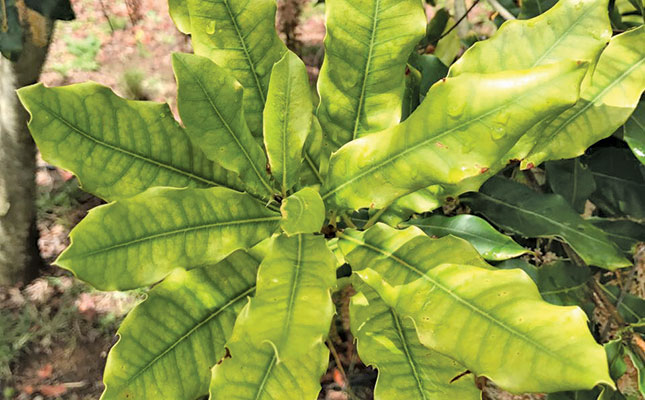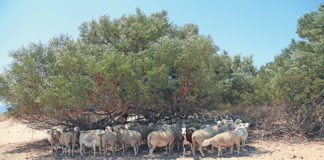
Photo: Lindi Botha
Manure can be an effective supplementary organic fertiliser if handled and used correctly. It can, however, be very harmful if applied in excessive quantities.
Dr Gerhardus Nortjé, a senior lecturer at the Department of Environmental Sciences at the University of South Africa (Unisa), notes that all manures are not equal. The mineral nutrient content of manure obtained from different animals differs widely in terms of both concentration and ratios between nutrient elements.
“Chicken manure, for example, generally has much higher concentrations of nitrogen (N), phosphorus (P) and potassium (K) than ordinary cattle kraal manure. It’s more than two times higher in N, three times higher in P, and more than one-and-a-half times higher than K. Caution should therefore be exercised when applying it.”
Even manure obtained from the same type of livestock can differ drastically in nutrient content.
“The age of the animal is important; young cattle use more P when growing and thus excrete little P. The diet of the animal also plays a role. Dairy cattle that are fed high levels of P excrete most of it, making their manure high in P concentration.
“Sheep manure from an arid area like the Karoo was found to contain high levels of soluble salts, and applications of large quantities of salt to the soil caused detrimental levels of salinity in deciduous fruit orchards. The same was found for goat manure in northern Limpopo. Chicken manure also has higher salinity than cattle kraal manure.”
Nortjé stresses that with all these differences, it is essential to obtain a nutrient element analysis of the manure before it is used.
Application
Due to the low nutrient element concentrations of manure, it is typically applied in tons per hectare, rather than hundreds of kilograms per hectare, as in the case of chemical fertiliser.
According to Nortjé, 10t of cattle kraal manure will, on average, contain as much N, P and K as 300kg LAN (28% N), 300kg single super phosphate (8,3% P) and 200kg potassium chloride (50% K).
“Applications would then average between 5t/ha and 10t/ ha kraal manure for ordinary annual crops and between 20t/ha and 40t/ha for high-value vegetable and orchard crops, which have high nutrient requirements.
“The recommended annual application of chicken manure is 2t/ ha. I’ve heard of farmers applying up to 30t/ ha, which would effectively mean they’re applying P at a rate of 450kg/ha/year!
“Because chicken manure, like sheep manure, is known as a ‘hot’ manure that readily burns crops, it’s not advisable to apply more than 1t/ha to 2t/ ha at a time. Of course, as
with a chemical fertiliser, you should base the amount of manure on the amount of a particular nutrient element that you want to apply, as well as the nutrient element concentration in the manure. The amount of manure to apply is usually based on the amount of N that you want to apply.”
Nortjé explains that since manure is not a balanced nutrient mixture, it is usually necessary to balance it by an additional application of some mineral fertiliser.
Timing
As with many functions on a farm, timing plays a crucial role in the application of manure fertiliser.
Elements that are in organic form in manure need to be released into inorganic form through mineralisation by soil microbes before they can be utilised by plants.
“Studies by the Tshwane University of Technology with a specific chicken manure and cattle kraal manure showed that after an incubation period of four months, 51% of the N in the chicken manure and only 21% of that in the cattle manure was recovered as inorganic N,” says Nortjé.
“So for a deciduous fruit crop that grows in summer, manure should be applied the previous autumn, while for a winter crop, it should be applied the previous spring.”
He adds that manure acts like a slow-release N source. In the same way, although it seems logical that P would become plant-available only after mineralisation over time, the study showed that 80% of the P in the cattle kraal manure that was plant-available at the end of the four-month incubation period was plant-available immediately after incorporation of the manure. Similar findings were reported elsewhere.
“In contrast, only 30% of the P in the chicken manure that was in a plant-available form at the end of the incubation period was plant-available immediately after application, but this rose to 87% after four weeks.
“Potassium is present as a free iron in manure and all of it is available to plants immediately after manure application.”
Ripening
Nonetheless, Nortjé does not recommend the application of fresh manure, and emphasises that it should be allowed to ripen or ‘sweat’ for a few months.
“This applies to all manure. It’s extremely important that farmers analyse manure samples before applying them. The handling of cattle kraal manure is also crucial. Aerobic (well-aerated) conditions should not be allowed to develop, as much of the N will be lost. The manure should be kept dense and moist during the sweating period.”
He advises farmers to prevent leaching of nutrients, particularly N, by stockpiling the manure on a dense surface, or building ponds to collect the leachate.
“It should not be carted and left in heaps on the soil for an extended period before being incorporated into the soil.”
Nortjé says that farmers need to understand the limits of each crop before considering manure applications, as different crops react differently to high levels of certain elements.
“Macadamia nuts are extremely vulnerable to high soil P levels, so a special warning is needed about the relatively high P contents of chicken and dairy manure, particularly for subtropical crops.
“There are many extreme cases of serious problems caused by excessive soil P levels due to applications of large amounts of these manures. Establish how much P needs to be applied, and supplement the N with chemical fertilisers.”
Beware of chicken manure in compost
He cautions against using large volumes of chicken manure in compost, as the high phosphate proportion can lead to phosphate-induced iron deficiency where chicken manure-rich compost is used continually over a number of years.
“Where problems in subtropical crops have been studied, horribly high P levels were found to be the cause. This was not as a result of a build-up of chemical fertilisers, but of injudicious application of cattle manure, specifically manure from dairies, or composts in which 50% to 70% of dairy manure was included.
“This was proved in a statistical research trial on soil health in 2012. Numerous research publications from California warn against the injudicious application of dairy manure because of the danger of producing harmful P levels as a result.”
Nortjé concludes that while manure can be a useful source of inexpensive fertiliser, soil analysis always plays a central role in fertiliser applications, and nutrients should not be applied without first checking for deficient or excessive nutrients.
Email Dr Gerhardus Nortjé at [email protected].











